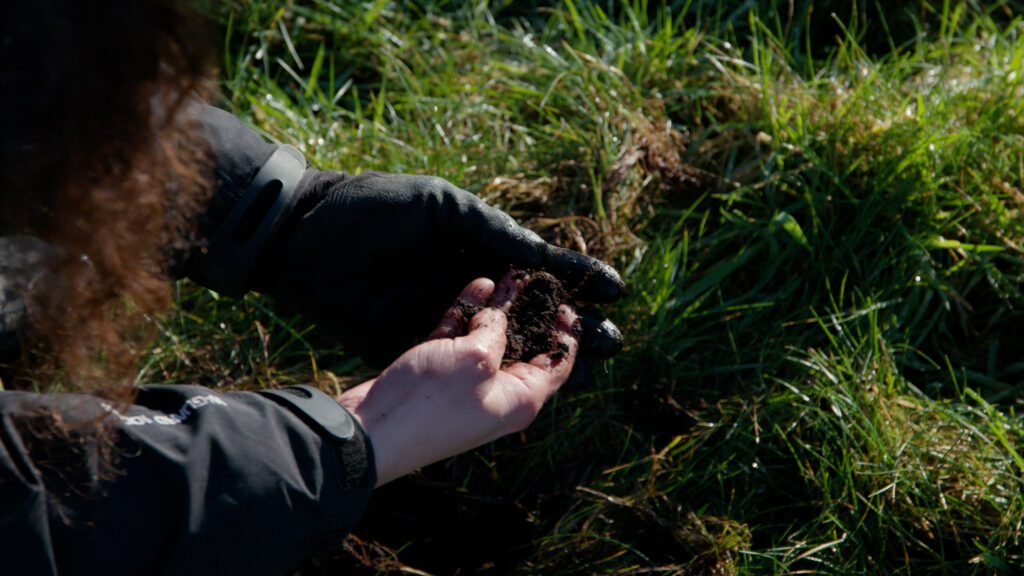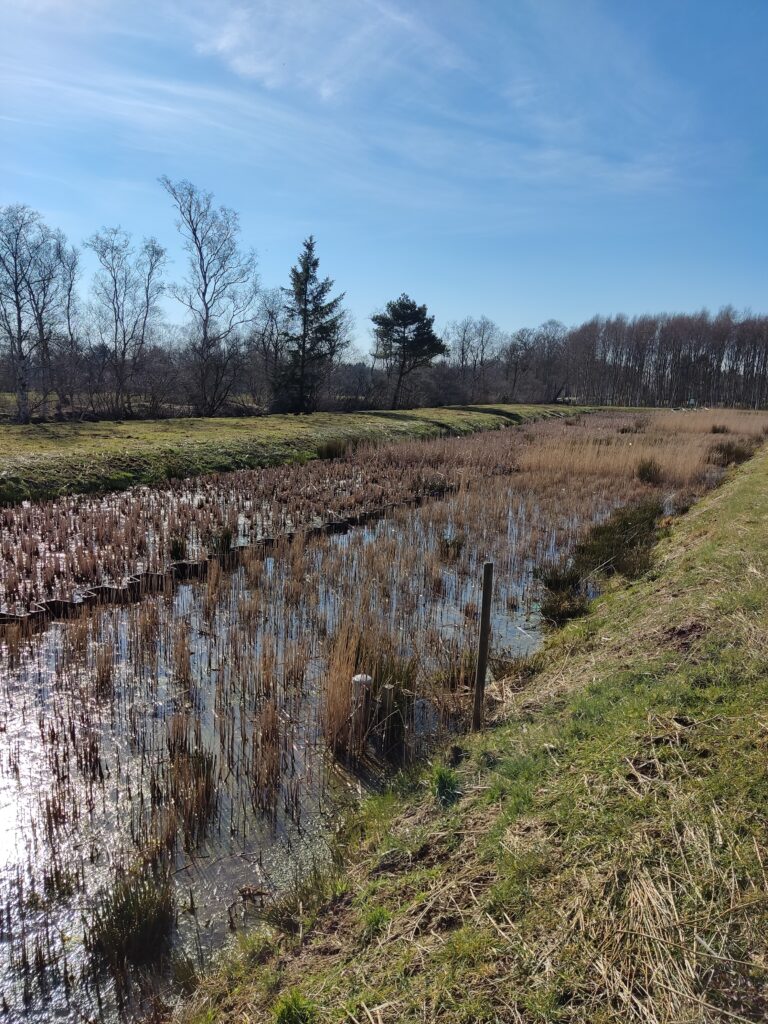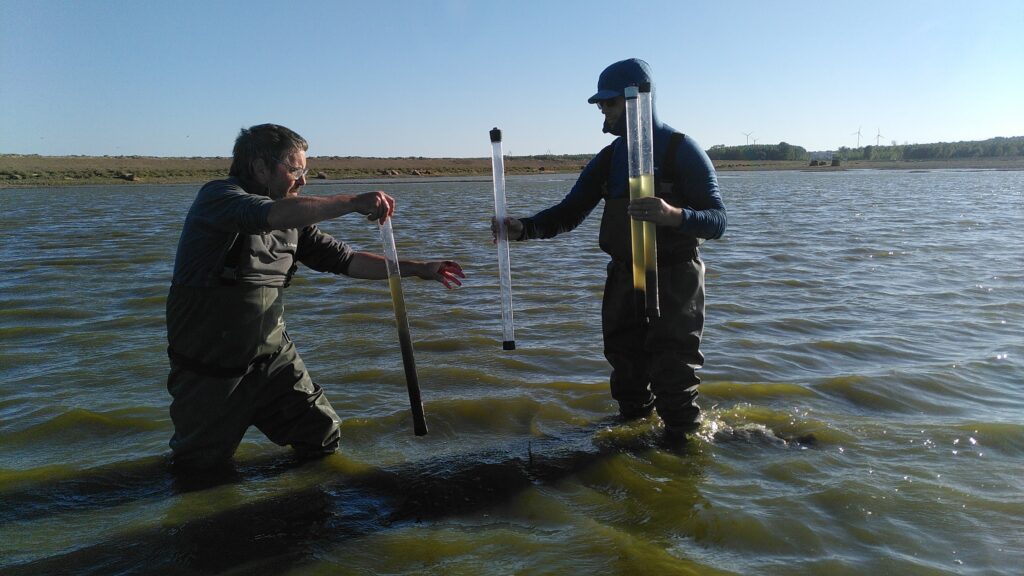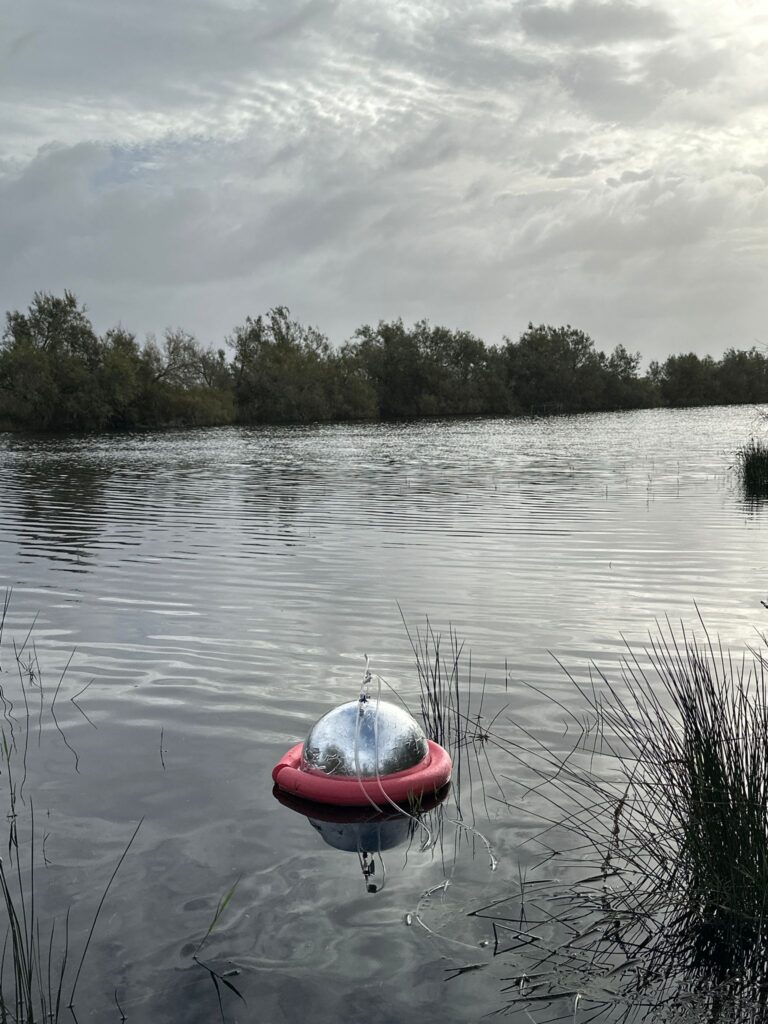Wetlands are connected to human wellbeing. Restoring wetlands contributes to human’s health and integrity.
Our wellbeing is linked to our climate. The World Health Organization has recognised how our physical and mental wellbeing rely on a stable climate, biodiversity, and sustainable development.
Wetlands connect all three. An acre of wetlands can hold up to 1.5 million gallons of floodwater, protecting coastal areas from natural disasters. Peatlands already store twice as much carbon as the global forest biomass. And the fish and rice paddies harvested from wetlands feed up to 4.5 billion people annually.
This connection is at the heart of the 27th World Wetlands Day this Friday, 2 February 2024. Led by the theme “Wetlands and Human Wellbeing,” this year’s activities show the history and intertwined relationship between wetlands and human health.

The WET HORIZONS coordinating team at Aarhus University, examining soil at the Lille Vildmost wetland in Denmark. Photo credit: ESCI
“For centuries people have found solace in remote wetlands, but there is now evidence that spending time in places like these actually helps boost mental health. This is particularly essential for the dark winter months in northern latitudes,” explains Mark Reed, Professor of Rural Entrepreneurship at Scotland’s Rural College.
Despite this history, we are now losing these ecosystems at an alarming rate. The 2018 Global Wetland Outlook from the Ramsar Convention revealed that one third of the wetlands have been lost globally since 1970, mainly to urbanization and agriculture.
A key theme of the World Wetlands Day 2024 is the need to act now, and Europe’s researchers believe we already have solutions to turn things around.
“I think global treaties and recent EU laws mean we’re in the right decade to restore these ecosystems,’’ says Dania Abdul Malak, Director of European Topic Centre for Spatial Analysis and Synthesis at University of Malaga. ‘’Nowadays there are policies that can really help reestablish their function, and make sure they can also provide ecosystem services. Restoring wetland ecosystems will become critical for a more sustainable climate, biodiversity and human wellbeing by 2030.”

The WET HORIZONS Radboud University partners conducting research, using a helophyte filter to filter wastewater, at Hankhausen Moor, in Germany. Photo credit: Gabrielle Quadra
For Matuesz Grygoruk, a professor at Warsaw University of Life Sciences’ (SGGW) Department of Hydrology, Meteorology and Water Management, people should focus on wetland restoration when determining environmental management actions. “Restoring wetlands brings back their functions that can hardly be replaced by any other environmental management measures,” he says.
Restoring wetlands can soon bring back their biodiversity, water storage, and soil carbon sequestering capabilities. It also helps remove harmful nitrogen and phosphorus compounds from water.
“None of these functions can be properly achieved by other methods. Restoring wetlands to our landscape should not be seen as optional, but as a core activity of modern environmental management,” Grygoruk continues.
Reed, Malak and Grygoruk are members of two EU-funded wetland restoration projects called WET HORIZONS and RESTORE4Cs. Both are helping to inform and support wetland policy in Europe.
WET HORIZONS focuses on filling knowledge gaps where data is lacking. The project explores new methods of using wetlands which avoid draining the area.
“The WET HORIZONS project quantifies the benefits associated with wetland restoration, allowing better communication of the need for restoration. Our research shows that, in the long term, the social, economic, and environmental benefits of wetland restoration become a competitive alternative to ‘traditional’ wetland use,” notes Grygoruk.
Essentially, it is possible to maintain wetland benefits, by keeping wetlands wet.

The RESTORE4Cs partners holding sediment samplers at the Danube Delta Case Pilot, in Romania. Photo credit: Camille Minaudo
RESTORE4Cs, which stands for Modelling RESTORation of wEtlands for Carbon pathways, Climate Change mitigation and adaptation, ecosystem services, and biodiversity, Co-benefits, evaluates how wetland restoration affects biodiversity, climate change, and local communities.
“Our project builds on years of research to find the best possible way to restore specific wetland habitats, leading to co-benefits. These targeted restoration actions designed by RESTORE4Cs serve multiple goals. They also guide, with evidence, the EU climate and biodiversity objectives and the new rules under the EU Agriculture Policy and the EU soil Strategy to 2030,” describes Malak.
As Grygoruk concludes, these benefits will help humanity for the present and future. “A better quality environment, more clean water, and fewer greenhouse gas emissions are the benefits of wetland restoration that improve the quality of life for all of us.”

The RESTORE4Cs partners conducting research, using a floating chamber to catch both diffusive and ebullitive fluxes, at the Camargue Case Pilot, in France. Photo credit: RESTORE4Cs Fieldwork Team
For more information about WET HORIZONS please see our contact page.
For more information about RESTORE4Cs please contact: Madeira Scauri, LifeWatch ERIC, madeira.scauri@lifewatch.eu